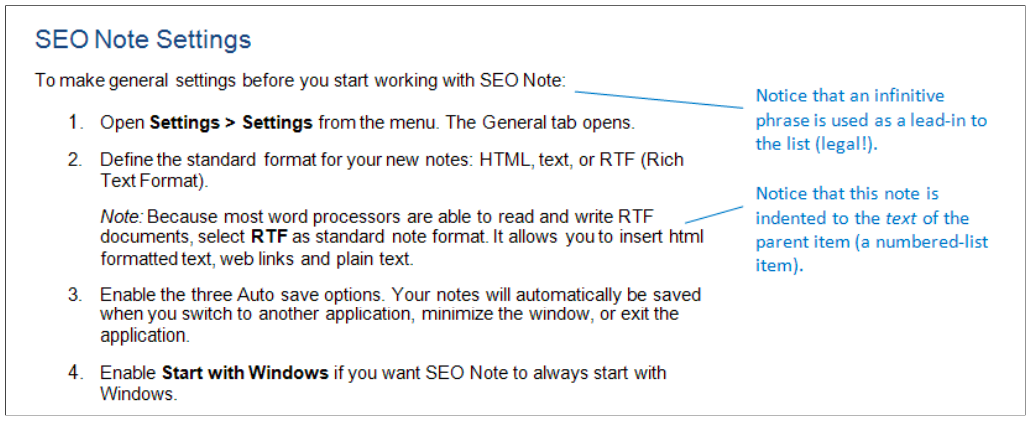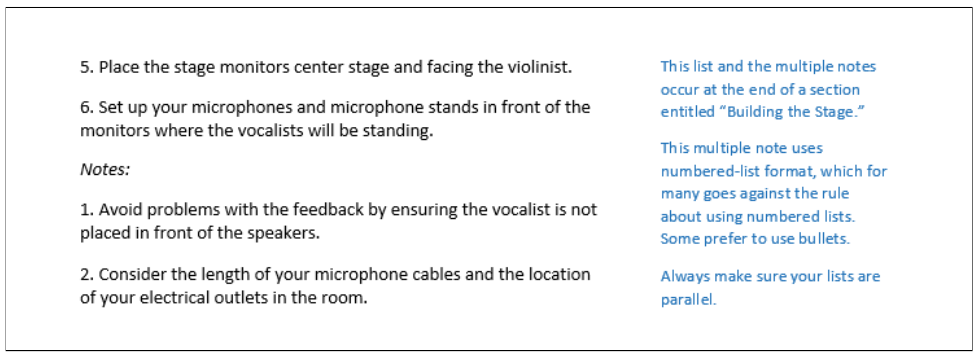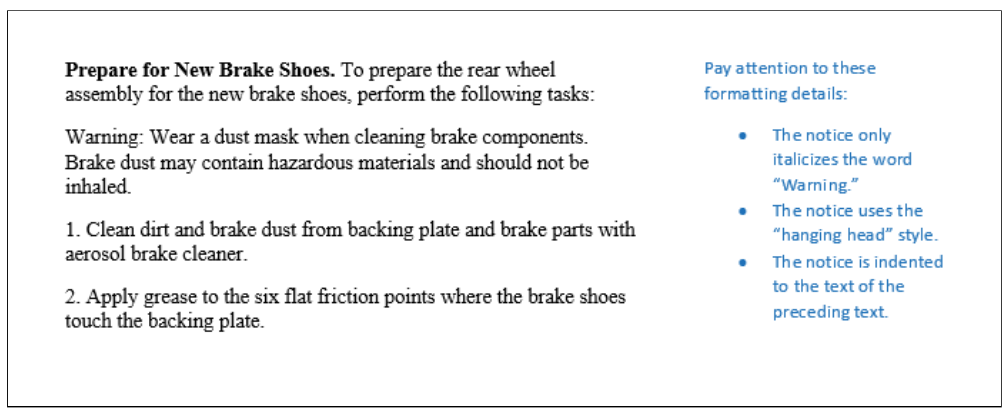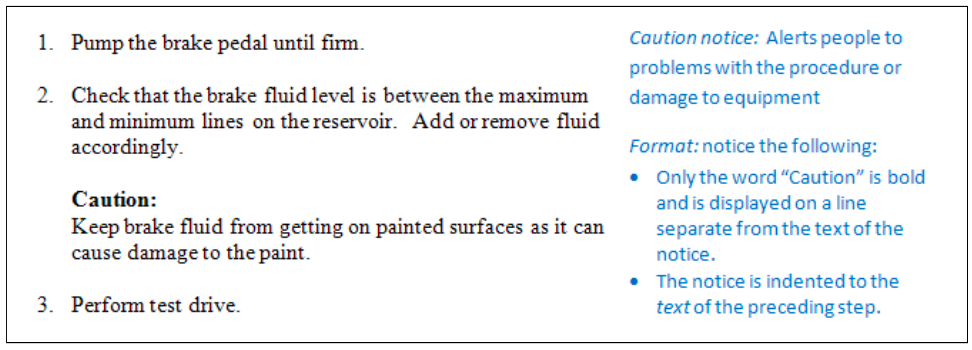4.6: Special Notices
- Page ID
- 51542
\( \newcommand{\vecs}[1]{\overset { \scriptstyle \rightharpoonup} {\mathbf{#1}} } \)
\( \newcommand{\vecd}[1]{\overset{-\!-\!\rightharpoonup}{\vphantom{a}\smash {#1}}} \)
\( \newcommand{\id}{\mathrm{id}}\) \( \newcommand{\Span}{\mathrm{span}}\)
( \newcommand{\kernel}{\mathrm{null}\,}\) \( \newcommand{\range}{\mathrm{range}\,}\)
\( \newcommand{\RealPart}{\mathrm{Re}}\) \( \newcommand{\ImaginaryPart}{\mathrm{Im}}\)
\( \newcommand{\Argument}{\mathrm{Arg}}\) \( \newcommand{\norm}[1]{\| #1 \|}\)
\( \newcommand{\inner}[2]{\langle #1, #2 \rangle}\)
\( \newcommand{\Span}{\mathrm{span}}\)
\( \newcommand{\id}{\mathrm{id}}\)
\( \newcommand{\Span}{\mathrm{span}}\)
\( \newcommand{\kernel}{\mathrm{null}\,}\)
\( \newcommand{\range}{\mathrm{range}\,}\)
\( \newcommand{\RealPart}{\mathrm{Re}}\)
\( \newcommand{\ImaginaryPart}{\mathrm{Im}}\)
\( \newcommand{\Argument}{\mathrm{Arg}}\)
\( \newcommand{\norm}[1]{\| #1 \|}\)
\( \newcommand{\inner}[2]{\langle #1, #2 \rangle}\)
\( \newcommand{\Span}{\mathrm{span}}\) \( \newcommand{\AA}{\unicode[.8,0]{x212B}}\)
\( \newcommand{\vectorA}[1]{\vec{#1}} % arrow\)
\( \newcommand{\vectorAt}[1]{\vec{\text{#1}}} % arrow\)
\( \newcommand{\vectorB}[1]{\overset { \scriptstyle \rightharpoonup} {\mathbf{#1}} } \)
\( \newcommand{\vectorC}[1]{\textbf{#1}} \)
\( \newcommand{\vectorD}[1]{\overrightarrow{#1}} \)
\( \newcommand{\vectorDt}[1]{\overrightarrow{\text{#1}}} \)
\( \newcommand{\vectE}[1]{\overset{-\!-\!\rightharpoonup}{\vphantom{a}\smash{\mathbf {#1}}}} \)
\( \newcommand{\vecs}[1]{\overset { \scriptstyle \rightharpoonup} {\mathbf{#1}} } \)
\( \newcommand{\vecd}[1]{\overset{-\!-\!\rightharpoonup}{\vphantom{a}\smash {#1}}} \)
\(\newcommand{\avec}{\mathbf a}\) \(\newcommand{\bvec}{\mathbf b}\) \(\newcommand{\cvec}{\mathbf c}\) \(\newcommand{\dvec}{\mathbf d}\) \(\newcommand{\dtil}{\widetilde{\mathbf d}}\) \(\newcommand{\evec}{\mathbf e}\) \(\newcommand{\fvec}{\mathbf f}\) \(\newcommand{\nvec}{\mathbf n}\) \(\newcommand{\pvec}{\mathbf p}\) \(\newcommand{\qvec}{\mathbf q}\) \(\newcommand{\svec}{\mathbf s}\) \(\newcommand{\tvec}{\mathbf t}\) \(\newcommand{\uvec}{\mathbf u}\) \(\newcommand{\vvec}{\mathbf v}\) \(\newcommand{\wvec}{\mathbf w}\) \(\newcommand{\xvec}{\mathbf x}\) \(\newcommand{\yvec}{\mathbf y}\) \(\newcommand{\zvec}{\mathbf z}\) \(\newcommand{\rvec}{\mathbf r}\) \(\newcommand{\mvec}{\mathbf m}\) \(\newcommand{\zerovec}{\mathbf 0}\) \(\newcommand{\onevec}{\mathbf 1}\) \(\newcommand{\real}{\mathbb R}\) \(\newcommand{\twovec}[2]{\left[\begin{array}{r}#1 \\ #2 \end{array}\right]}\) \(\newcommand{\ctwovec}[2]{\left[\begin{array}{c}#1 \\ #2 \end{array}\right]}\) \(\newcommand{\threevec}[3]{\left[\begin{array}{r}#1 \\ #2 \\ #3 \end{array}\right]}\) \(\newcommand{\cthreevec}[3]{\left[\begin{array}{c}#1 \\ #2 \\ #3 \end{array}\right]}\) \(\newcommand{\fourvec}[4]{\left[\begin{array}{r}#1 \\ #2 \\ #3 \\ #4 \end{array}\right]}\) \(\newcommand{\cfourvec}[4]{\left[\begin{array}{c}#1 \\ #2 \\ #3 \\ #4 \end{array}\right]}\) \(\newcommand{\fivevec}[5]{\left[\begin{array}{r}#1 \\ #2 \\ #3 \\ #4 \\ #5 \\ \end{array}\right]}\) \(\newcommand{\cfivevec}[5]{\left[\begin{array}{c}#1 \\ #2 \\ #3 \\ #4 \\ #5 \\ \end{array}\right]}\) \(\newcommand{\mattwo}[4]{\left[\begin{array}{rr}#1 \amp #2 \\ #3 \amp #4 \\ \end{array}\right]}\) \(\newcommand{\laspan}[1]{\text{Span}\{#1\}}\) \(\newcommand{\bcal}{\cal B}\) \(\newcommand{\ccal}{\cal C}\) \(\newcommand{\scal}{\cal S}\) \(\newcommand{\wcal}{\cal W}\) \(\newcommand{\ecal}{\cal E}\) \(\newcommand{\coords}[2]{\left\{#1\right\}_{#2}}\) \(\newcommand{\gray}[1]{\color{gray}{#1}}\) \(\newcommand{\lgray}[1]{\color{lightgray}{#1}}\) \(\newcommand{\rank}{\operatorname{rank}}\) \(\newcommand{\row}{\text{Row}}\) \(\newcommand{\col}{\text{Col}}\) \(\renewcommand{\row}{\text{Row}}\) \(\newcommand{\nul}{\text{Nul}}\) \(\newcommand{\var}{\text{Var}}\) \(\newcommand{\corr}{\text{corr}}\) \(\newcommand{\len}[1]{\left|#1\right|}\) \(\newcommand{\bbar}{\overline{\bvec}}\) \(\newcommand{\bhat}{\widehat{\bvec}}\) \(\newcommand{\bperp}{\bvec^\perp}\) \(\newcommand{\xhat}{\widehat{\xvec}}\) \(\newcommand{\vhat}{\widehat{\vvec}}\) \(\newcommand{\uhat}{\widehat{\uvec}}\) \(\newcommand{\what}{\widehat{\wvec}}\) \(\newcommand{\Sighat}{\widehat{\Sigma}}\) \(\newcommand{\lt}{<}\) \(\newcommand{\gt}{>}\) \(\newcommand{\amp}{&}\) \(\definecolor{fillinmathshade}{gray}{0.9}\)Learning Objectives
Upon completion of this chapter, readers will be able to:
- Distinguish between the four most common types of special notices.
- Explain and apply the appropriate use for each type of special notice.
- Explain and apply standard format guidelines for each type of special notice.
Special Notices
Special notices are an important feature of professional technical writing: they highlight special information readers need to know to understand what they are reading, to accomplish what they want to do, to prevent damage to equipment, and to keep from hurting themselves or others.
Your task in this section is to learn the different types of special notices, their uses, and formats.
"Notices alert readers to the possibility of error, damage, or injury. They can also provide extra emphasis."
Guidelines for Specific Types of Notices
In this section, and in this course, you use a specific style of notices. If you want to use a different style, get with your instructor. Otherwise, follow these guidelines in planning and designing special notices—they are your "specs"!
- Use special notices to emphasize key points or warn or caution readers about damage or injury.
- Be careful to use the types of special notices precisely for their defined purposes. Use the four types of special notices in the following ways:
- Note—To emphasize points or remind readers of something, or to indicate minor problems in the outcome of what they are doing.
- Warning—To warn readers about the possibility of minor injury to themselves or others.
- Caution—To warn readers about possible damage to equipment or data or about potential problems in the outcome of what they are doing.
- Danger—To warn readers about the possibility of serious or fatal injury to themselves or others.
- Deciding on which type of notice to use is not an exact science. Don't use a danger notice when a warning is more appropriate (the same as "crying wolf"). Also, use notices in a consistent way throughout a report. Do not create your own notices, such as putting "Important" in place of "Warning."
- Place special notices at the point in text where they are needed. For example, place a caution or danger notice before discussing a step in which readers might hurt themselves.
- Avoid having too many special notices at any one point in the text. Otherwise, the effectiveness of their special format will be lost. (If you have too many, combine them.)
- Explain the consequences of not paying attention to the notice. State what will happen if the reader does not heed the notice.
- Avoid all-caps for the text of any special notice. The examples in this section use bold or italics.
Note: Take a look around your garage or kitchen, and look at the special notices you see on products. You will see some variation, but these are likely to be dependent on specific industry standards

Activity
Take pictures of the special notices around you and share them on the Padlet, below. Please remember that everything you share on the Padlet is public.
Access the Padlet
Format for Special Notices
Use the following for specific details on the capitalization, typography (bold, underlining, different fonts, different types sizes), and spacing for each type of special notice.
Note
Use the following format for simple notes:
- Type the word "Note" followed by a colon. (Although the following examples use bold, consider using italics instead to prevent visual confusion with headings.)
- Begin typing the text of the note one space after the colon. (But don't put the text of the note in bold or italics.)
- Single space within the text of the note; skip one line above and below the note.
- Start run-over lines on the regular left margin. 5. Align the note with the text to which it refers (as illustrated in the second example).


Notes
Use the following format for multiple notes:
- Use this format when you have so many notes that they would distracting to present individually.
- Type the word "Notes" followed by a colon. Italicize the word "Notes," if possible.
- Use a numbered list for the individual notes; in it, follow the rules for numbered lists. (Do not use bold or italics for the individual notes.)
- Align the notes with the text to which they refer; skip the equivalent of one line above and below the notes.

Warning
Use the following format for warnings:
- Type the word "Warning," italicize it, and follow it with a colon.
- Either tab to beginning of the text of the warning, or use the hanging-indent format (which is much better). Try for 0.25 to 0.5 inches of space between the end of the warning label and the beginning of the text.
- Use regular body font for the text of the warning notice (no bold, no italics, no all-caps, no color).
- Align the warning notice with the text it refers to. 5. Skip the equivalent of one line above and below the warning notice.

Caution
Use the following format for caution notices:
- Type the word "Caution," follow it with a colon, and bold both the label and the colon.
- Skip one line and begin the text of the caution aligned with the start of the caution label.
- Single space the text of the caution; skip one line above and below the notice.
- Align the caution notice with the text it refers to (in the preceding, the warning notice occurs within a numbered list and is indented accordingly).

Danger
Use the following format for danger notices:
- Type the word "DANGER" in all-caps. (Underline it, or use bold.)
- Align the danger notice with the text it refers to.
- Single space the text of the danger notice; skip one line above and below the danger notice.
- Use bold on the text of the danger notice if you have it (but never all-caps).
- If you have graphics capability, draw a box around the danger notice (including the label).

Other Formatting Issues
Here are some additional points to consider concerning special notices:
Special alignment. Special notices must align to the text to which they refer. For example, if you have a note that adds some special detail to something in a bulleted list item, you must align that note to the text of the bulleted item. Of course, if the note follows a bulleted list but refers to the whole list, then you can use the regular left margin.
Single spaced text. All of the examples and discussion in this unit are based on double spaced text. For single spaced text, use your document-design "eye" to decide on spacing. Leave either one blank lines between running text and special notices—depending on what looks best to you. (And of course both running text and the text of the special notices would be single spaced.)
Placement of special notices. The standard rule is to place special notices before the point at which they are relevant. For example, you warn readers to back up all data before you tell them to reformat their hard drive. However, in practice this applies to serious special notices where great harm to data, equipment, or people is likely to ensue.
One technique used by very cautious writers (maybe those who have been burned) is to place all serious notices (warnings, cautions, and dangers) somewhere at the beginning of the document, and then repeat them individually where they apply.
Multiple special notices. You run into situations where you have three or four special notices, all jammed together in the same part of the text, each one following another. This is a problem because the whole point of the special formatting of the notices is lost: something is special because it is different from the surrounding. The solution to this problem is to create one identifying heading (for example, "Notes and Warnings"), and then list the notices (either bulleted or numbered) below it.
Other important things to remember. In any list, make sure your list is parallel. If you use bullets or numbers, make sure you have more than one bullet or number. That is, if you only need one bullet or one number in a bulleted or numbered list, you don't actually need a bulleted or numbered list.


